Coronation 10 May 1881 Role Ruler Name Carol of | ||
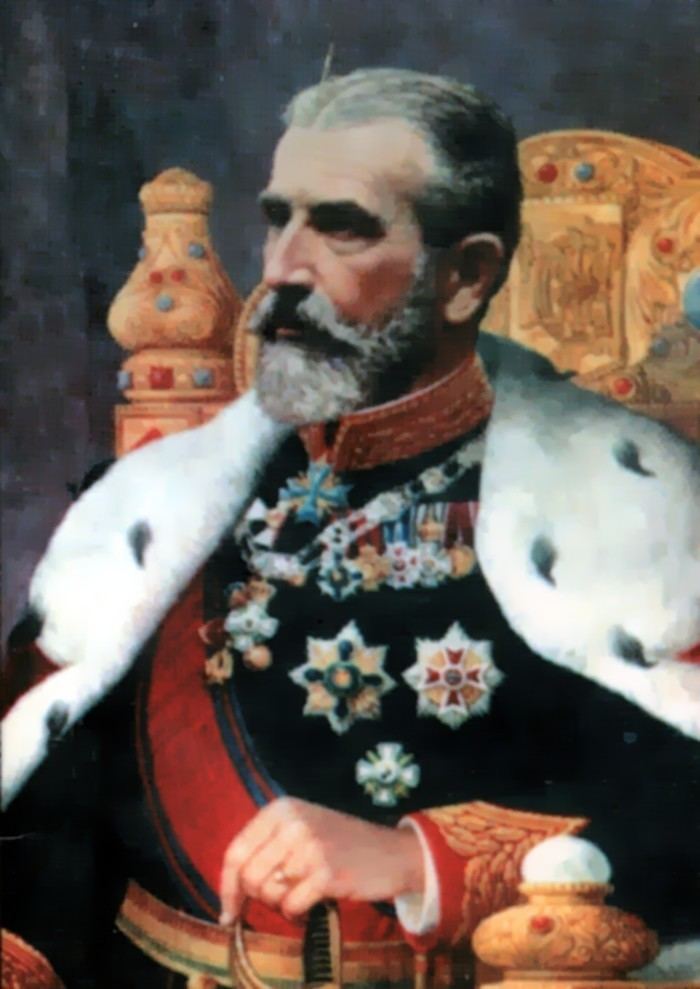 | ||
Reign 15 March 1881 – 10 October 1914 Reign 20 April 1866 – 15 March 1881 Born 20 April 1839Sigmaringen, Germany ( 1839-04-20 ) Burial Curtea de Arges, Romania Parents Princess Josephine of Baden, Karl Anton, Prince of Hohenzollern Siblings Leopold, Prince of Hohenzollern Similar People Ferdinand I of Romania, Elisabeth of Wied, Michael I of Romania, Marie of Romania, Alexandru Ioan Cuza | ||
Children Princess Maria of Romania | ||
Carol I (20 April 1839 – 27 September (O.S.) / 10 October (N.S.) 1914), born Prince Karl of Hohenzollern-Sigmaringen, was the ruler of Romania from 1866 to 1914. He was elected Ruling Prince (Domnitor) of the Romanian United Principalities on 20 April 1866 after the overthrow of Alexandru Ioan Cuza by a palace coup d'état. In May 1877, he proclaimed Romania an independent and sovereign nation. The defeat of the Ottoman Empire (1878) in the Russo-Turkish War secured Romanian independence. He was proclaimed King of Romania on 26 March [O.S. 14 March] 1881. He was the first ruler of the Hohenzollern-Sigmaringen dynasty, which ruled the country until the proclamation of a republic in 1947.
Contents
- Early life
- On the way to Romania
- The Constitution
- King of Romania
- The end of the reign
- Life and family
- Titles styles and honours
- References
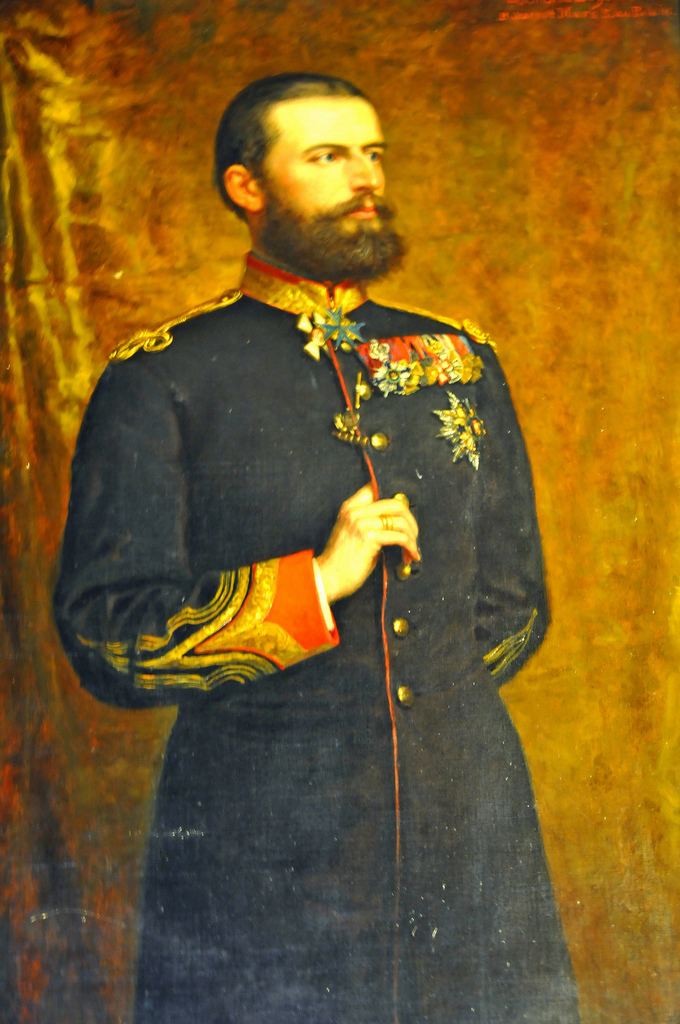
During his reign, Carol I personally led Romanian troops during the Russo-Turkish War and assumed command of the Russo/Romanian army during the siege of Plevna. The country achieved internationally recognized independence via the Treaty of Berlin, 1878 and acquired Southern Dobruja from Bulgaria in 1913. Domestic political life, still dominated by the country's wealthy landowning families organized around the rival Liberal and Conservative parties, was punctuated by two widespread peasant uprisings, in Wallachia (the southern half of the country) in April 1888 and in Moldavia (the northern half) in March 1907.

He married Princess Elisabeth of Wied in Neuwied on 15 November 1869. They only had one daughter, Maria, who died at the age of three.
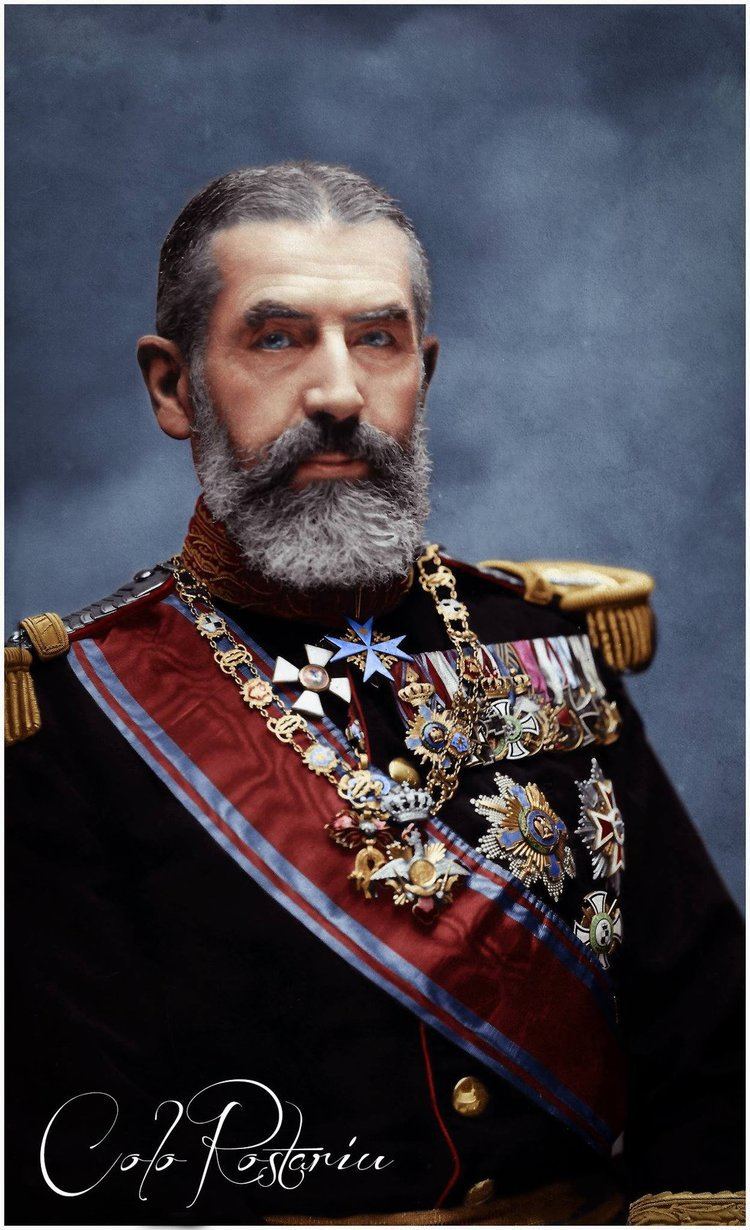
Carol never produced a male heir, leaving his elder brother Leopold next in line to the throne. In October 1880 Leopold renounced his right of succession in favour of his son William, who in turn surrendered his claim six years later in favour of his younger brother, the future king Ferdinand.

Early life

Prince Karl Eitel Friedrich Zephyrinus Ludwig of Hohenzollern-Sigmaringen was born in Sigmaringen, the second son of Prince Karl Anton of Hohenzollern-Sigmaringen and his wife, Princess Josephine of Baden. After finishing his elementary studies, Karl entered the Cadet School in Münster. In 1857 he was attending the courses of the Artillery School in Berlin. Up to 1866, when he accepted the crown of Romania, he was a Prussian officer. He took part in the Second Schleswig War, including the assault of the Fredericia citadel and Dybbøl, an experience which would be very useful to him later in the Russo-Turkish war.
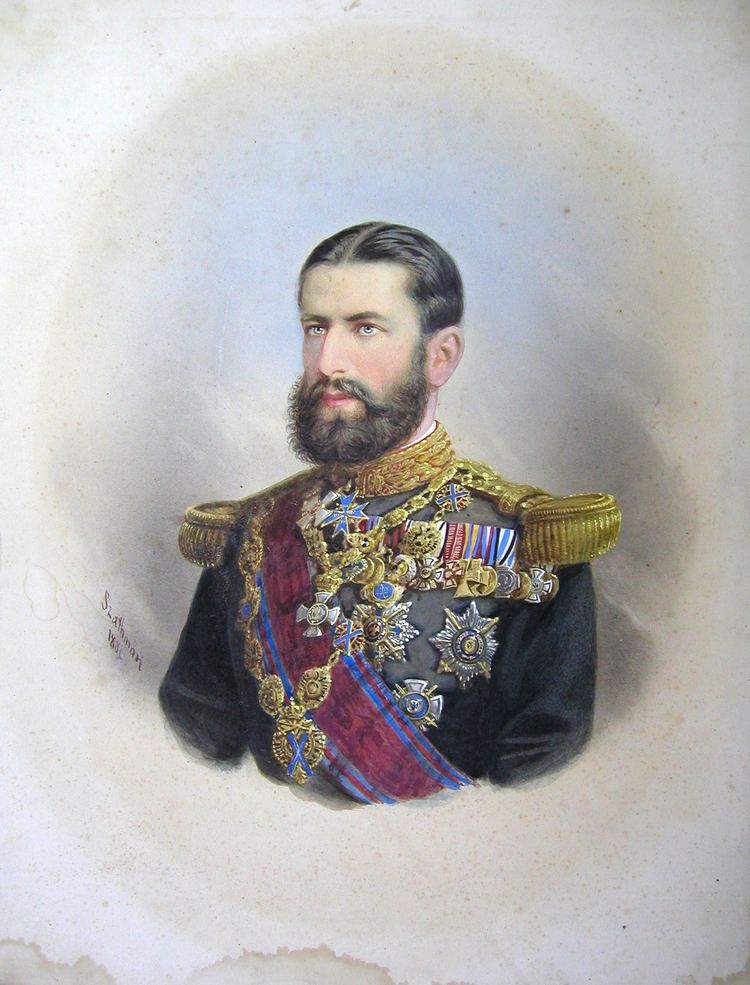
Although he was quite frail and not very tall, prince Karl was reported to be the perfect soldier, healthy and disciplined, and also a very good politician with liberal ideas. He was familiar with several European languages. His family was closely related to the Bonaparte family (one of his grandmothers was a Beauharnais, Joséphine's niece-in-law, and the other a Murat, Joachim's niece Marie Antoinette Murat), they enjoyed very good relations with Napoleon III of France.
On the way to Romania
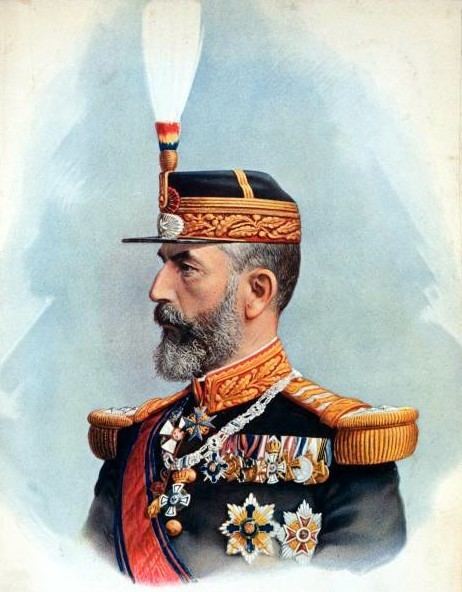
The former Domnitor of united Romania, Alexandru Ioan Cuza, had been expelled from the country by the leading noblemen and Romania was in a political chaos. Cuza's double election, both in Wallachia and in Moldavia) had been the basis on which the Romanian Principalities' unification was recognized by the European powers. With him gone, the country was in danger of disintegration.
As Romanian politicians searched for a successor, Napoleon suggested Karl. Napoleon's recommendation weighed heavily with Romanian politicians of the time, since Romania was strongly influenced by French culture. Another factor was Karl's blood relation to the ruling Prussian family. Ion Brătianu was the Romanian politician who was sent to negotiate with Karl and his family the possibility of installing him on the Romanian throne.
Due to the political conflict between Prussia and the Austrian Empire, Karl travelled incognito by railroad from Düsseldorf to Baziaș, through Switzerland. He received there a Swiss passport from a Swiss public clerk, friend of his family, under the name of Karl Hettingen. From Baziaș he travelled by boat to Turnu Severin, as there was no railroad to Romania. As he crossed the border onto Romanian soil, he was met by Brătianu, who bowed before him and asked Karl to join him in his carriage. He was elected Domnitor on 20 April.
On 10 May 1866 (22 May 1866 N.S.), Karl entered Bucharest. The news of his arrival had been transmitted by telegraph and he was welcomed by a huge crowd eager to see the new ruler. In Băneasa he was given the keys to the capital city. Eventually it was a rainy day after a long period of drought, apparently a very favorable sign. As he was crowned, Karl swore this oath: "I swear to guard the laws of Romania, to maintain the rights of its People and the integrity of its territory." He spoke in French, as he did not speak Romanian. However, he endeared himself to his adopted country by adopting the Romanian spelling of his name, Carol.
The Constitution
Immediately after arriving in the country, the Romanian parliament adopted, on 29 June 1866, the 1866 Constitution of Romania, one of the most advanced constitutions in that time. This constitution allowed the development and modernization of the Romanian state. In a daring move, the Constitution chose to ignore the nominal suzerainty of the Ottoman Empire, which paved the way towards de jure independence.
Article 82 stated that "The ruler's powers are hereditary, starting directly from His Majesty, prince Carol I of Hohenzollern-Sigmaringen, on the male line through the right of first-born, with the exclusion of women and their issue. His Majesty's descendants will be raised in the Eastern Orthodox Religion." It, like all but one of its successors, enshrined the principle that the king reigned, but did not rule.
In 1877, Romania was proclaimed independent, ending the fiction of Ottoman suzerainty that had existed since 1866. From 1878, Carol held the title of Royal Highness (Alteță Regală). On 15 March 1881, the constitution was amended to proclaim Romania a kingdom. Carol became the first king, while the heir-apparent or heir-presumptive would be called Prince Royal. On 10 May, Carol was crowned king.
King of Romania
King Carol was a cold man who was always focused on the prestige of the dynasty he had founded. His wife, Elizabeth, claimed he 'wore the crown in his sleep'. He was very meticulous and he tried to impose his style upon everyone that surrounded him. Though he was devoted to his job as Romania's ruler, he never forgot his German roots. In 48 years of rule—the longest in Romanian history—he helped Romania gain its independence, raised its prestige, helped redress its economy and established a dynasty. In the Carpathian mountains, he built Peleș Castle, still one of Romania's most visited touristic attractions. The castle was built in German style, as a reminder of the king's origin. After the Russo-Turkish war, Romania gained Northern Dobruja and Carol ordered the first bridge over the Danube, between Fetești and Cernavodă, linking the newly acquired province to the rest of the country.
A member of the German higher landed aristocracy (Fürst), Carol did not continue the modernizing policies initiated by his predecessor, Alexandru Ioan Cuza. Grave social problems caused in part by the inequity of land ownership continued unimpeded. This influencing peasant uprisings throughout Carol's reign. For example the 1907 Peasant's revolt which cost 10,000 lives.
The end of the reign
The long rule of Carol helped the quick development of the Romanian state. But, towards the end of his reign and the start of World War I, Carol wanted to enter the war on the side of the Central Powers. However, Romanian public opinion was overwhelmingly Francophile and sided with the Triple Entente. Carol had signed a secret treaty in 1883 which had linked Romania with the Triple Alliance. Although the treaty was to be activated only if Russia attacked one of the signatories, Carol was convinced that the honourable thing to do was to enter the war supporting the German Empire and his cousin, Emperor William II.
On 3 August [O.S. 21 July] 1914, an emergency meeting was held with the Crown Council, where Carol told them about the secret treaty and shared his opinion with them. However, most of the Crown Council members strongly disagreed, opting for neutrality. King Carol died on 10 October [O.S. 27 September] 1914. The new king, Ferdinand (under the influence of his wife, Marie of Edinburgh, a British princess), was more willing to listen to public opinion.
Life and family
When he was elected prince of Romania, Carol was unmarried. In 1869, the prince started a trip around Europe and mainly Germany, to find a bride. During this trip he met and married Princess Elizabeth of Wied at Neuwied on 15 November 1869. Their marriage was one of the most unfit matches in history, with Carol being a cold and calculating man while Elizabeth was a notorious dreamer. They had one child, Princess Maria, born in 1871, who died 24 March 1874. She had no prospect of inheriting her father's throne; as mentioned above, the Constitution limited succession to the male line. This led to the further estrangement of the royal couple, Elizabeth never completely recovering from the trauma of losing her only child.
After the proclamation of the Kingdom (1881), the succession was a very important matter of state. Since Carol's brother, Leopold (in 1880), and his oldest son, William (in 1886), declined their rights, the second son of Leopold, Ferdinand, was named prince of Romania and heir-presumptive to the throne, in 1886.
Towards the end of Carol's life, though, Carol and Elizabeth finally found a way to understand each other and were reported to have become good friends.
